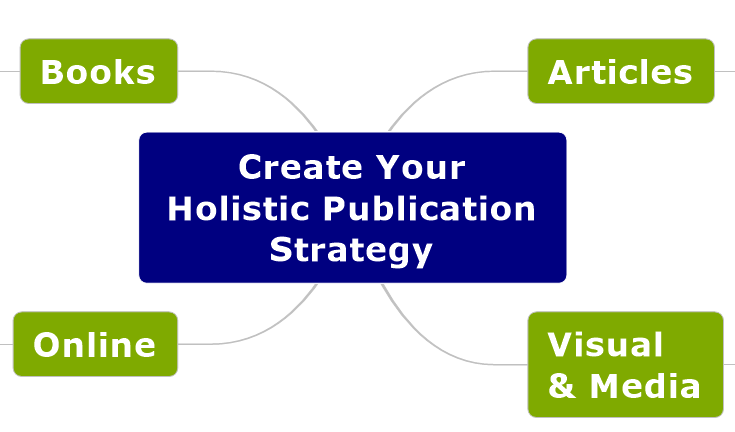How to Avoid Predatory Publishers
by Becky De Oliveira
Becky De Oliveira taught writing at the undergraduate and graduate level for more than ten years before entering the Applied Statistics and Research Methods Ph.D. program at the University of Northern Colorado where she a doctoral candidate currently writing her dissertation.
A version of this blog entry was originally published in Lahman, M. (2022). Writing and representing qualitative research. Maria Lahman invited Becky to contribute this useful post. Dr. Lahman is the author of Writing and Representing Qualitative Research, and the relevant text, Ethics in Social Science Research: Becoming Culturally Responsive. Use the code MSPACEQ423 for a 20% discount on SAGE research methods books, valid through December 2023.
Predatory journals are those that charge fees for publication and offer little in the way of “quality control” (Clark & Smith, 2015). Predatory publishers, as Clark and Smith (2015) point out, should not be confused with open-access publishers, The difference between the two is stark: Open-access publishing offers studies free for everyone to access—helping to quickly disseminate information in ways that are beneficial to people all over the world—and therefore a fee is charged. Predatory publishers have only one goal—to make as much money as possible. They do not follow standard publishing practices, such as robust peer review and editorial services, and the work they publish is not even indexed in reputable search systems, making the information nearly impossible for others to find.

Jeffrey Beall, a librarian at the University of Colorado, compiled a list of predatory publishers known as Beall’s List (2017). In 2015, he recorded nearly 700 offenders. There are currently about 1,300 known or suspected predatory journals on the list. The list is curated at Beallslist.
How do you identify a predatory journal? Look for these classic signs:
1. The journal offers an unrealistic turnaround time. Publication in reputable journals typically takes months if not years from submission to publication. Very short turnaround times do not allow for a rigorous peer review process, let alone editorial and proofreading safeguards.
2. The journal requires payment of an excessive fee, but the article will not be open access. While some areas of research have article-processing fees, most social science journals do not charge large fees.
3. Frequent soliciting by email is a red flag. Most legitimate publications are inundated with submissions and rarely go out of their way to pester potential authors with requests to submit work.
Novice researchers may be tempted to use unscrupulous publishers in an effort to “pad their CV . . . in order to obtain employment, grants and promotions” (Bartholomew, 2014, p. 384). This may appear to offer a short-term solution to the immense pressure to publish, but it is a mistake in the long run. Not only will your work be discredited by your affiliation with predatory publishers, but it will also be less likely to ever be read by those who could benefit from it. It is far better for the sake of your career to go through the rigorous process of learning to publish through legitimate means. Have faith in your work and your ability to make an important contribution to your field.
More Methodspace Posts about Academic Writing
Find examples and guidance about collecting data on blogs or vlogs.
by Maria Lahman, Ph.D. and Tyler Kincaid Ph.D., panelists for the How to Do Research and Get Published webinar, “How to write a paper: Qualitative methodology” share their insights.
Conduct a reference search and format your reference section was offered as part of the How to Do Research and Get Published webinar series. Watch the recording and find lots of useful resources in this post.
Find a collection of resources about writing and publishing articles and more!
Learn about research design, doctoral writing, and academic publishing with these posts and recordings from Dr. Linda Bloomberg and Dr. Merle Werbeloff.
Think about your own big picture, and how to paint it. There are many options for sharing ideas and disseminating findings. What will work for you, based on the nature of your research, your findings, and your career goals?
Christina Silver explains why and how to use qualitative data analysis software to manage and analyze your notes, literature, materials, and data. Sign up for her upcoming (free) symposium!
Find tips to help you share your research and numerical findings.
This list of books and articles include a range of discussions about academic and research careers.
Want anyone, whether or not they are associated with an institution that allows them access to an academic library? Learn about open access and how to publish your OA article.
Jessica Lester and Trena Paulus co-edited a December 2023 special issue for the Sage journal, Qualitative Inquiry, “Qualitative inquiry in the 20/20s: Exploring methodological consequences of digital research workflows.” Read the articles and watch a roundtable with contributors. This is the second of two discussions of the special issue.
Jessica Lester and Trena Paulus co-edited a December 2023 special issue for the Sage journal, Qualitative Inquiry, “Qualitative inquiry in the 20/20s: Exploring methodological consequences of digital research workflows.” Read the articles and watch a roundtable with contributors. This is the first of two discussions of the special issue.
Academic writing is not always writing! Pictures and media enliven our writing, and can be important for showing concepts and contexts.
How and why should you argue in academic writing? Learn more from Dr. Alastair Bonnett, author of How to Argue.
This post includes tips about writing qualitative proposals excerpted from Research Design by Creswell and Creswell.
Thinking about research careers and calling: finding the right fit.
What do journal editors want? Read an open-access collection of editorials that offer practical suggestions about how to organize and write an article that will pass the review process and get published.
Safary Wa-Mbaleka, Arceli Rosario, and Anna Cohen Miller discussed opportunities and challenges for global researchers and academic writers in this roundtable discussion.
Don’t get caught by predatory publishers!
Celebrate Academic Writing Month 2023 by getting organized! Find open-access resources to help you avoid being distracted by details and lost files.
Jo VanEvery believes that a writing practice based on the desire to write and enjoyment of the intellectual challenge will produce the outputs you are under pressure to produce. Learn how in this post!
AI can do a lot of things but it cannot do originality. Learn more from Dr. Alastair Bonnett, author of How to Be Original.
In this presentation, Dr. Linda Bloomberg explains how to think through key questions associated with presentation of qualitative findings, and walks through an example that demonstrates ways to align research designs with presentation strategies.
Dr. Linda Bloomberg offers detailed suggestions for getting organized and starting a dissertation or thesis.
Connect or reconnect to the joy of writing with these tips from Dr. Katherine Firth.
How can critical thinking skills help you write more precisely? In this post Dr. Alex Baratta offers some practical tips.
Learn how to design and defend your PhD research with the Idea Puzzle software from Ricardo Morais.
Between 2015 and 2022 Paul Atkinson produced four books about ethnography. How and why did that happen, and what did he want to achieve? Learn about this quartet of books.
Applying an equity focused lens specifically to reporting and dissemination necessitates a careful and deliberate approach. Learn more in this post!






























Look candidly at your unfinished project. Is it a stepping stone, and completion will be allow you to move ahead? Or is it an obstacle that prevents you from moving forward? Find ideas to help you determine whether to revive that piece of writing or let it go.